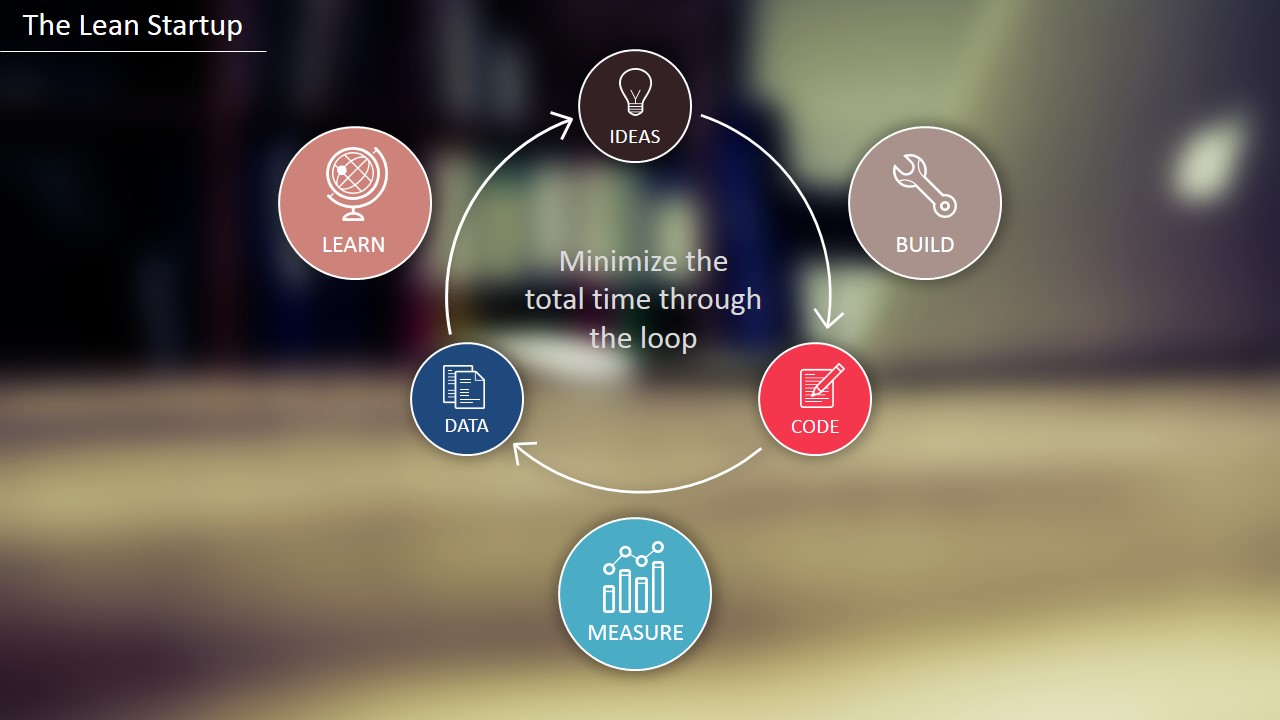How to Create Products wisely ?
Startups attract entrepreneurs for their dynamic nature, quick decisions and great revenues. However, the thing is startups are likelier to failure than any other organizations as they operate in the high-risk environment. In order to understand that the game is not worth the candle and the product won`t be successful, you can use the Lean Startup method.
What is it ?
The Lean Startup is a method used to establish a new company or introduce a new product. It means constant testing of the product, its iterative release, and making adjustments based on the feedback received from consumers. The Lean Startup method also rejects detailed planning and significant investments. It enables you to see the value of your solution at the start and hence save resources for the implementation.
In other terms, neither business planning, nor strategy, nor the charisma of the founders will help a startup if the product it develops turns out to be useless on the market. Lean Startup is based on constant experiments with a minimal viable product (MVP) and includes such tools as Customer Development, Lean Canvas (9-step business model), agile (prompt response to feedback from customers).
The Lean Startup approach is applicable in any industry and company as long as it operates under high-risk conditions.
Without effective management structure, a new company won`t be able to take the most of its capabilities. The author of the Lean Startup concept compares startup management to driving a car on a road that is rapidly changing its direction. It`s the same with startups: many entrepreneurs work as if they are going into space and thereby struggle to flexibly adjust to changing conditions.
Validated learning
The hypotheses should be experimentally tested — the product is being refined on the basis of valid hypotheses. Regarding that the startup’s product is completely new, its creators have no idea whether people need it, who their target audience is, and what is valuable for them. To answer these questions, it is necessary not only to put forward hypotheses and test them, but also to obtain empirical data, and then quickly adjust the product according to the information derived.
Build-Measure-Learn
After creating an MVP, founders collect feedback from customers. Then, based on the received data, they make a decision whether it`s worth working as planned or changing the course. If the product at the MVP stage demonstrates its inconsistency with the needs of the audience and the market as a whole, you should develop a new version focused on customers`pain. In doing so, your new product may have nothing to do with the original idea.
Innovative accounting
After creating an MVP, founders collect feedback from customers. Then, based on the received data, they make a decision whether it`s worth working as planned or changing the course. If the product at the MVP stage demonstrates its inconsistency with the needs of the audience and the market as a whole, you should develop a new version focused on customers`pain. In doing so, your new product may have nothing to do with the original idea.
Innovative accounting
After creating an MVP, founders collect feedback from customers. Then, based on the received data, they make a decision whether it`s worth working as planned or changing the course. If the product at the MVP stage demonstrates its inconsistency with the needs of the audience and the market as a whole, you should develop a new version focused on customers`pain. In doing so, your new product may have nothing to do with the original idea.

Startup success metrics should be:
effective — related to the company’s goals, give a clear picture of what else needs to be done to achieve the desired results;
simple — immediately give an understanding of the current situation on the product;
controlled — it is possible to check the data.
Lean Startup Benefits
Making decisions based on evidence and data
The methodology helps organizations practically understand whether there is a need for the program or service they intend to create. Thus, companies may rely not only their predictions but also statistical data.
Speed of development
Thanks to the lean startup methodology, companies can quickly test strategies aimed at obtaining necessary short-term results. A/B testing, in which an organization tests alternative approaches on different respondents, is one of the possible tools.
More flexibility about making changes to ideas
Many founders seek to demonstrate their product in the best possible way in order to make a good first impression. Releasing a product without certain functions may seem wrong as customers might reject the “raw” version. However, even though the consumers don`t like your product, you can take advantage of their negative feedback to make it better next time.
Due to the specifics of a particular industry you can experience difficulties when developing an MVP. Though this is a key thing about following the Lean Startup approach. Without an MVP you can`t test your first version to improve it..
Don`t have necessary resources
The Lean Startup methodology can save your money and yet requires a sufficient number of resource to conduct research, survey, and collect data. You need to employ brilliant specialists who could properly analyze your product and introduce it. On top of that, there is a need for certain technology and funds to develop your first versions and MVPs.
Stages
1. Think of an idea
At the beginning, you should come up with a product that would solve customers`problems. Here you also need to create a business model Lean Canvas. It consists of 9 blocks: customer segments, value propositions, channels, customer relationships, revenue streams, key resources, activities, partners, and cost structure. Address each of the blocks to get an overall picture of your product
2.Form a hypothesis
As soon as you have an understanding your product, it’s time to create hypotheses that will guide through the product development. They can be divided into 3 risk categories: desirability, viability, and feasibility. Come up with one or several hypotheses for each segment in order to prove or reject them in the future. If your hypothesis is proved to be valid, it can be applied to the product.
3.Create a minimum viable product (MVP)
When developing your MVP, keep in mind that the project should solve consumers`problems. Throughout the whole process, you can change it in accordance with the customers` requests. The more maneuverable your product is, the more chances it has to win. By developing and launching an MVP on the market, you will be able to assess if people do need the product
4.Measure, Learn, and Pivot
After developing an MVP, you should focus on collecting customers`review. The more you can gain, the better. This database will help you improve the product as much as possible. If you see that the market firmly rejects the product, you can stop developing it at any time with minimal losses. Alternatively, you can pivot, change the idea direction or add more functionality.
5.Test the product and validate the hypothesis
According to the Lean Startup Approach, you should constantly test your product until one of your hypothesis is proven to be valid or invalid. You can repeat this cycle as many times as you wish until you get an overall picture.
1. Think of an idea
At the beginning, you should come up with a product that would solve customers`problems. Here you also need to create a business model Lean Canvas. It consists of 9 blocks: customer segments, value propositions, channels, customer relationships, revenue streams, key resources, activities, partners, and cost structure. Address each of the blocks to get an overall picture of your product
Additionally, AI-powered customer service can make it easier for employees to help customers and resolve issues. In conclusion, the intersection of UX/UI design, AI, and the modern work station is revolutionizing the way we work. By making the workplace more efficient, productive, and user-friendly, these three elements are helping to improve the overall work experience for employees and customers alike.”

Recommendations
Don`t be afraid to make mistakes. There is no sense in putting all efforts and resources to create a perfect product from the first time. Some hypotheses will be untenable, functions will be unnecessary, and so on.
Work with feedback throughout the whole process. It should include not only user surveys, considering their needs and wants, but also an analysis of actual consumer behavior.
Without constant experimentation and innovation, the progress of a startup is impossible. Any hypothesis must be verified, tested and substantiated by facts.
All processes should not be based solely on MVP — if the hypothesis of its value is confirmed, it’s time to make a decision on the feasibility of creating a full-fledged product.
Conclusion
You can endlessly polish the product, introduce more and more new functions, bringing it, it would seem, to perfection — but in the end, startups have to face the fact that reality does not coincide with expectations. The Lean Startup method makes it possible to avoid disappointments and excessive costs, from an early stage creating such an offer that the consumer will not be able to resist. If the initial hypotheses are not confirmed in practice, they are erroneous, and the project needs to be revised.



